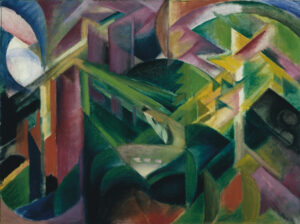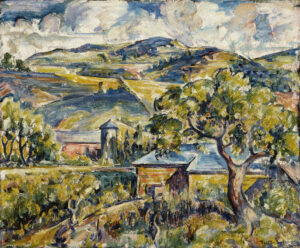
In this brilliant 1877 canvas, Claude Monet captures the very essence of industrial modernity with visionary boldness. The Impressionist master immerses us in the heart of the Saint-Lazare station, orchestrating a symphony of light, movement, and steam.
The vast glass and steel train shed becomes, under his brush, a spectacular theater where technique and poetry intertwine. Billows of smoke dance beneath the metallic vault—threatening and dark inside, then diaphanous and luminous against the azure sky. The train, a central and revolutionary protagonist in this urban scene, emerges from white clouds like a tamed mechanical beast, while light, filtered through immense glass panels, transforms this industrial cathedral into an almost mystical space.
For Further Exploration
- Arrival of the Normandy Train, Gare Saint-Lazare, by Claude Monet, 1877
- 60.3 × 80.2 cm (23 3/4 × 31 1/2 in.)
- The Art Institute of Chicago, European Painting and Sculpture, Gallery 201
- https://www.artic.edu/artworks/16571/arrival-of-the-normandy-train-gare-saint-lazare
A Pivotal Moment in Monet’s Career
With this series, Claude Monet (1840-1926) inaugurates a principle that would become his signature: the repeated representation of the same motif to capture atmospheric and temporal variations. This cycle marks a singular moment in his artistic trajectory—his final in-depth exploration of the urban world before devoting himself primarily to landscapes. This oil on canvas was exhibited at the third Impressionist exhibition in 1877, alongside seven other views of the same station, forming a coherent ensemble celebrating Parisian modernity. This thematic choice was not arbitrary: this station connected Paris to Normandy, where Monet had refined his plein air painting technique a decade earlier, and served as the departure point to the Impressionists’ favorite destinations. This emblematic work testifies to the Impressionists’ fascination with the architectural and technological achievements of their time.






